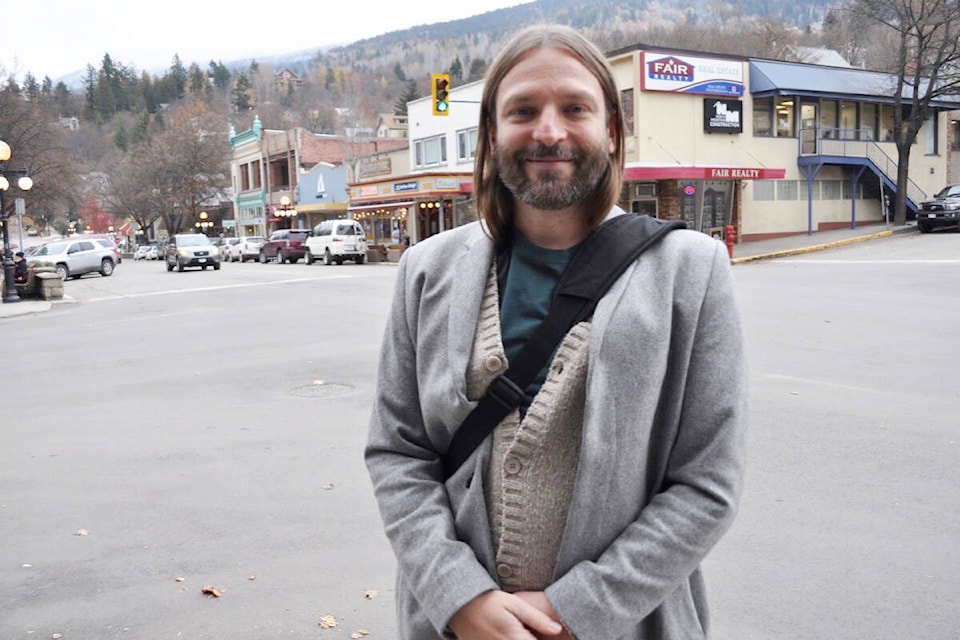Allow Blaine Cook this moment.
Ever since Elon Musk purchased Twitter in October, the billionaire has set fire to the social media app Cook helped create as its founding engineer 16 years ago.
Since purchasing Twitter for $44 billion, Musk has dismissed the company’s CEO and its board of directors, fired about half of its 7,500 staff – including moderators charged with fighting misinformation – and reinstated controversial users such as former U.S. President Donald Trump.
In response, users have begun to seek out alternatives to Twitter. Cook, who is now principal engineer for the coding company Fission and lives in Nelson, couldn’t be happier.
“I think it’s always been inevitable because the idea that a handful of corporations would control all of human communication has always been untenable.”
In 2006, Cook was working at a podcasting company called Odeo when coworker Jack Dorsey pitched the idea for a new social network. Cook was included on the project and became the engineer for what would later that year initially launch as a text messaging service called twttr before adopting the name and website it’s known as today.
As Twitter’s popularity surged, Cook pitched a new direction for the app: Instead of people only interacting with other Twitter users, the network would be decentralized to allow for conversations between users on competing platforms.
Cook reasoned Twitter, which at the time only comprised of around 10 employees, didn’t have the capacity to meet its growth. An open protocol would mean partner companies could share the burden of content moderation while also encouraging innovation.
Cook teamed up with an engineer at another social media company to build a prototype for the concept. But the pitch failed and in 2008 Cook was let go.
In the intervening years, Cook continued to preach the promise of decentralized social media. Now, as users leave Twitter to join the alternative social media app Mastodon that features the same concepts Cook once pitched, he says the moment feels “like 14 years of vindication all at once.”
Mastodon isn’t yet as straightforward or intuitive as Twitter. New users sign up to a server, also referred to as an “instance,” from which they access Mastodon. Although users can follow others on different servers, the app doesn’t have a universal verification badge to indicate if an account is real or a parody.
Finding specific users is also difficult without knowing what server they are on, and if a server happens to go down all of its accounts and posts go with it.

But there are obvious benefits over Twitter, as well.
The timeline is populated chronologically, not by an algorithm, so users see the posts they want and not what the app thinks you will want. Because Mastodon is crowdsourced there’s also no advertising, which makes it a refreshing experience for anyone tired of the constant billboard that Facebook’s timeline has become.
Cook thinks Mastodon will overcome its growing pains just as Twitter once did. The Twitter timeline, he points out, initially had to be scrolled through on pre-touchscreen phones while innovation came via third-party apps like TweetDeck (which Twitter purchased in 2011).
“Mastodon hasn’t had a lot of friction,” Cook said. “You develop things with friction. If you don’t have that traction, you’re not going to get anywhere. So I think we’re going to see rapid evolution of Mastodon.”
That evolution excites Cook because of the possibilities for integration with other services. Decentralized social networks give users the option of posting to multiple apps from one account. Tumblr, for example, announced Nov. 21 it would add support so its users’ posts could appear on Mastodon timelines.
Cook says verification — identified on Twitter by the blue check mark usually found on the accounts of celebrities and brands — could also eventually be improved in a decentralized network.
An individual organization like the Nelson Star, which has an active Twitter account that has never been verified, could set up a server and verify its own staff as users for little more than the cost of a domain name and a monthly host server provider.
It’s impossible, according to Cook, for one social media company to verify the identity of every user. Ideally, he says there should be one verification that can be used anywhere online, but only provides the information needed to confirm an identity.
To illustrate the point, Cook uses the example of showing ID at a bar. Identity theft is low when a bouncer is checking a card, but instead of just verifying age they are also seeing details that shouldn’t be necessary to enter a bar, like home address or gender.
“What we need are ways to say hey, I’m 21, and there’s a thing that’s signed by the Government of Canada that says they authenticate that I’m 21, but I’m not going to tell you who I am.”
Cook doesn’t think, however, that governments should be setting up their own social networks. Aside from clear concerns about censorship, the lack of necessary infrastructure and competition like that found in Canada’s mobile wireless market mean there’s no need for government regulation.
Instead, Cook thinks communities organizations, non-profits and co-ops should consider setting up networks. Libraries, he suggests, are ideal hosts for networks due to the inclusive nature of their services.
Is this all actually going to happen? Will people leave Twitter and even Facebook for decentralized social networks? Cook isn’t sure. But he hopes they do.
“I don’t know how it’s going to shake out. I don’t know what it’s going to feel like. I can’t wait.”
READ MORE:
•
•
•
| tyler.harper@nelsonstar.com
Like us on and follow us on .



